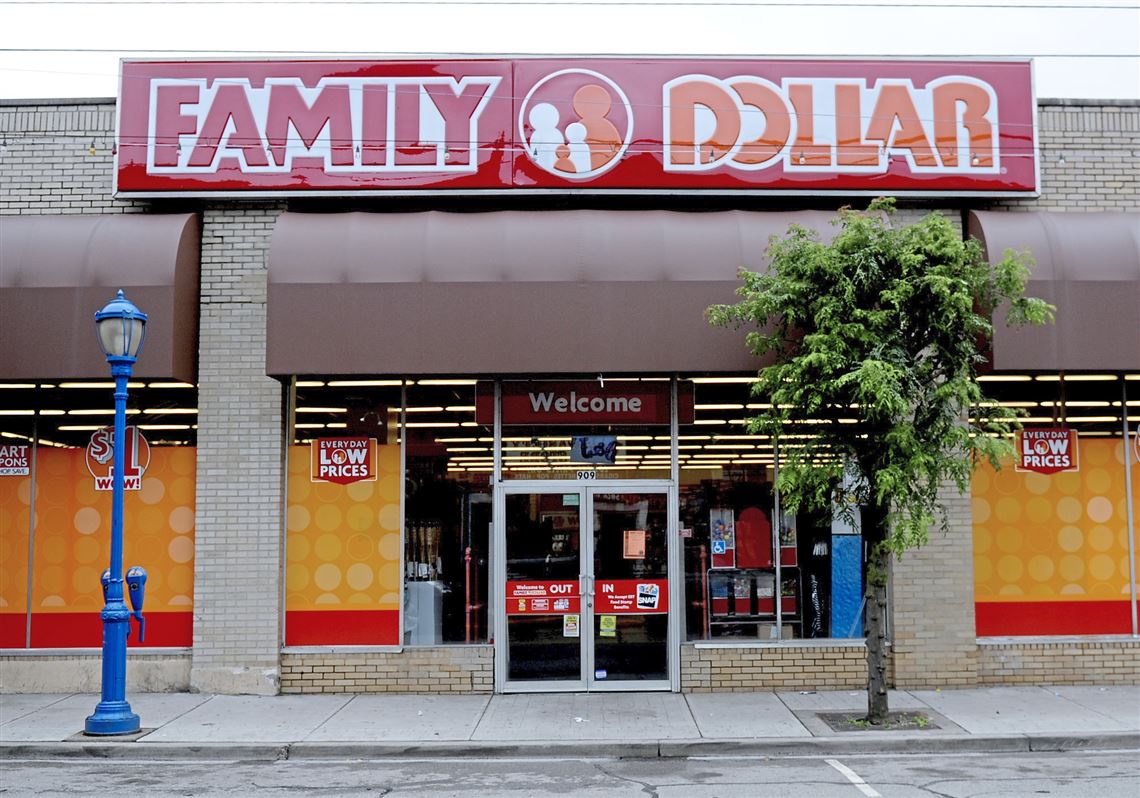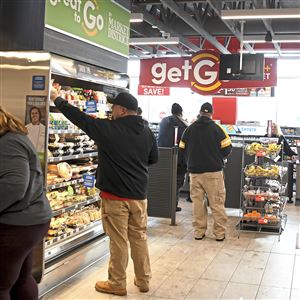The Family Dollar store in Sharpsburg got a makeover this spring — one of many happening at dollar stores across the country.
The store, which opened on Main Street back in 1994, now features brighter, wider aisles; expanded beauty products and household items; and more seasonal items. A wall of coolers lines the back of the store to give the retailer space to stock more frozen foods and perishable items.
It was one of 215 renovations done by the Charlotte, North Carolina-based company during the first quarter alone.
Both Family Dollar and Dollar General have been aggressively opening stores in recent years, while upgrading their existing locations to compete more directly with traditional grocery stores. That means new products on the shelves, a splash of paint and expanded refrigerated sections.
While dollar stores have always offered a steady, inexpensive supply of canned goods, snacks, cleaning products, party goods and beauty supplies, the displays featuring fresh fruit and dairy are new to many locations, noted Poonam Goyal, an analyst at Bloomberg Intelligence.
There’s a reason the chains are carving out important real estate and revising their plan-o-grams.
“For any retailer, the perishables matter,” Ms. Goyal said. “It’s the milk and eggs that drive more trips to the store.”
Such initiatives are especially attractive in underserved neighborhoods, where other retailers fear to tread.
“The ability to offer produce, particularly in areas with limited grocery availability, represents an attractive growth opportunity for Dollar General in the years ahead,” Todd J. Vasos, CEO, told analysts in an earnings call in March.
New resonance
Dollar stores have been around for years but they took on a new resonance when the Great Recession hit a decade ago.
While the chains’ core shoppers typically tend to be found at a lower income level, consumers of all sorts visited local dollar chain when the economic downturn hit, the Nielsen Co. found in a 2009 survey. The research firm found that high income shoppers spent 18 percent more at dollar stores in the second half of 2008 compared to the prior year.
Since then, the sector has continued to seize opportunities.
“The dollar store subsector of retail has been performing much better than the rest of retail,” said Mickey Chadha of Moody’s Investors Services.
That performance is driven by a few different factors, he said.
Dollar stores are attracting more customers as the stores add better product assortments, while retaining their core demographic. They’re offering bargains, with price tags that can average 20 percent to 40 percent below that of a traditional grocery store.
And, even in areas served by lots of retail options, the dollar stores tend to be smaller and closer to their customer base, so they offer convenience.
Proximity to customers is a key part of the business strategy, Ms. Goyal of Bloomberg noted.
“They’re catering to families that live paycheck to paycheck that don’t have the propensity to spend beyond that,” she said. “Rather than driving to Walmart, they’ll make a fill-in trip that’s within walking distance or a two-minute drive.”
Many traditional retailers have been battered in recent years as their customers shift more spending online.
“The other part is the dollar store base is not particularly vulnerable to e-commerce competition,” Mr. Chadha said. With the average total purchase at a dollar store at $10, it’s hardly worth trying to ship an order.
That doesn’t mean the dollar store chains aren’t investing in digital. Both Dollar General and Family Dollar — which was acquired in 2015 by Dollar Tree, the discount variety store popular for school items and seasonal items for a buck — have introduced apps that offer digital coupons, promotions and payment options.
A bargain is a bargain
This year, Goodlettsville, Tennessee-based Dollar General plans to open 900 stores to its base of more than 14,700 locations. Family Dollar plans to open about 300 locations.
Dollar Tree operates about 14,900 stores under the brands of Dollar Tree and Family Dollar brands.
While the sector has been growing rapidly, no growth lasts forever.
“They still probably have about two or three years of solid growth,” Mr. Chadha said. “And people are attracted to getting a good bargain. Shopping at a dollar store doesn’t have the stigma it used to.”
But competition is fierce. Dollar stores are not only competing with Walmart, he noted, but also hard discounters like Aldi, Lidl and Sav-A-Lot, grocery chains known for their no-frills experiences and deep discounts.
Also worth noting is that the demand from their core shopper base hasn’t faded.
“The economic expansion of the last six or seven years has been great for a lot of people, but the lower end demographic has not participated fully in that growth, Mr. Chadha said, noting that costs have increased for rent, health care and college loans.
“That tier is still challenged.”
Stephanie Ritenbaugh: sritenbaugh@post-gazette.com; 412-263-4910; Twitter: @StephanieRit
First Published: June 18, 2018, 12:30 p.m.


















